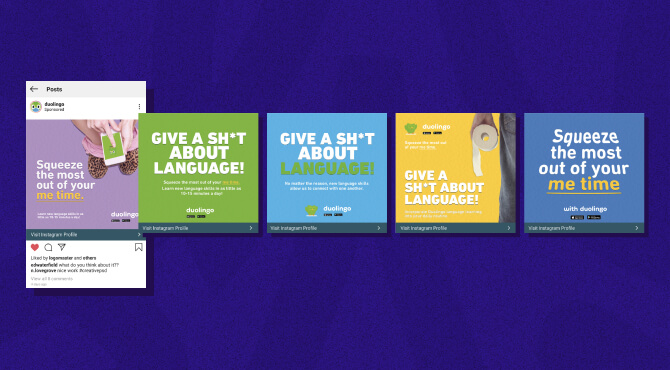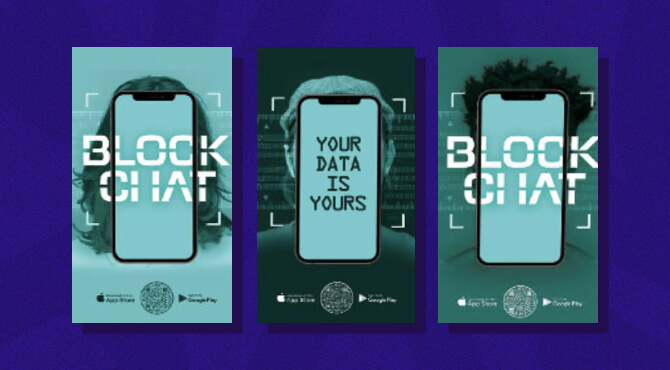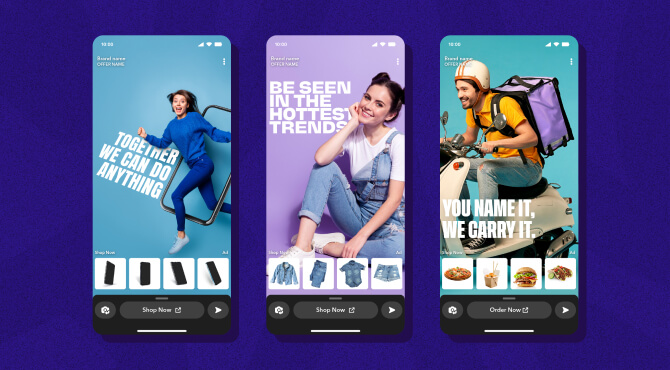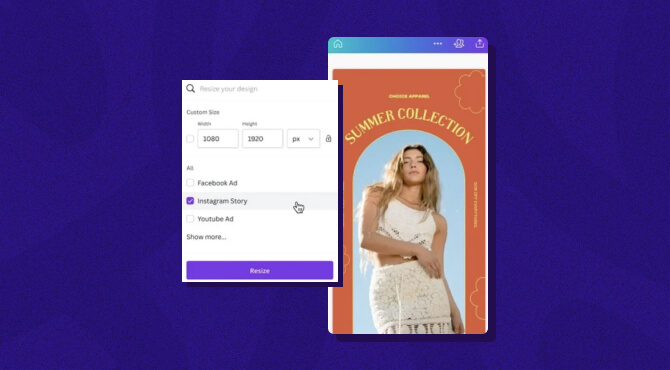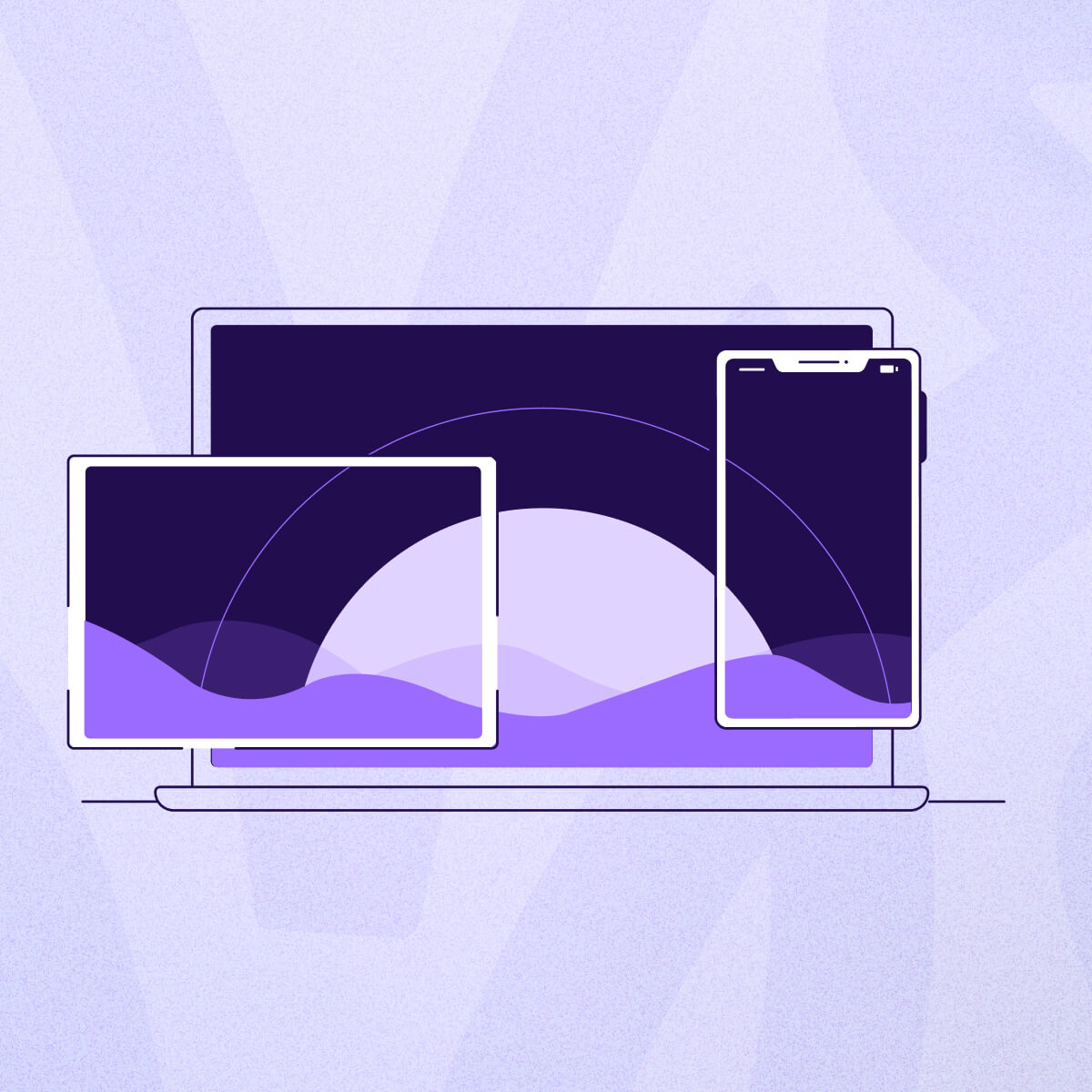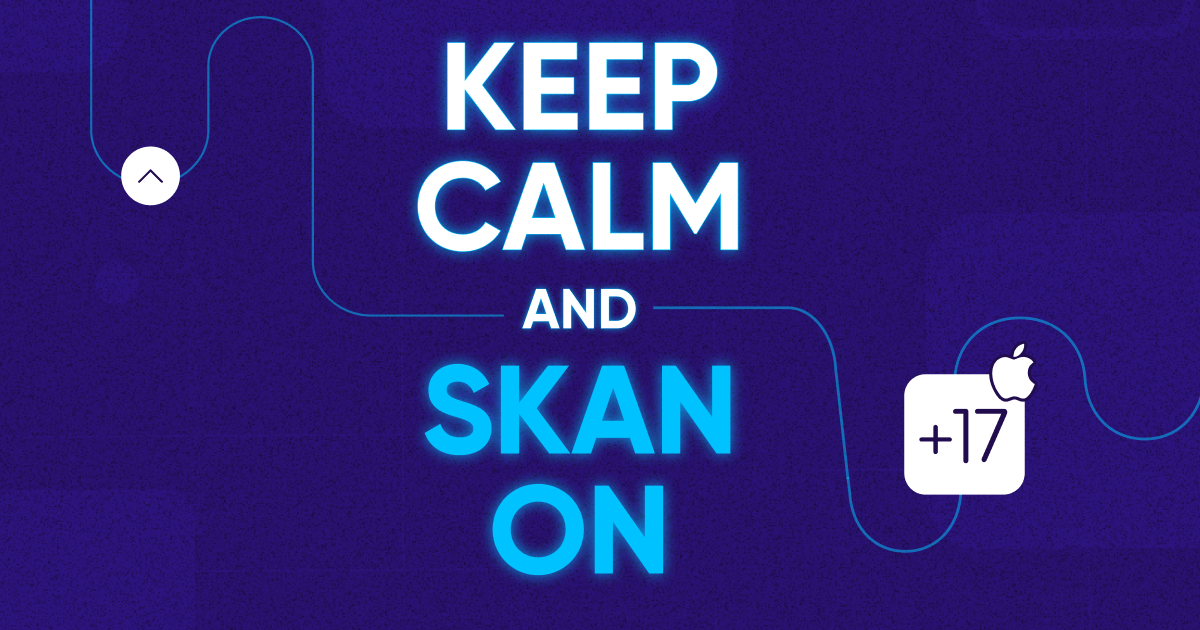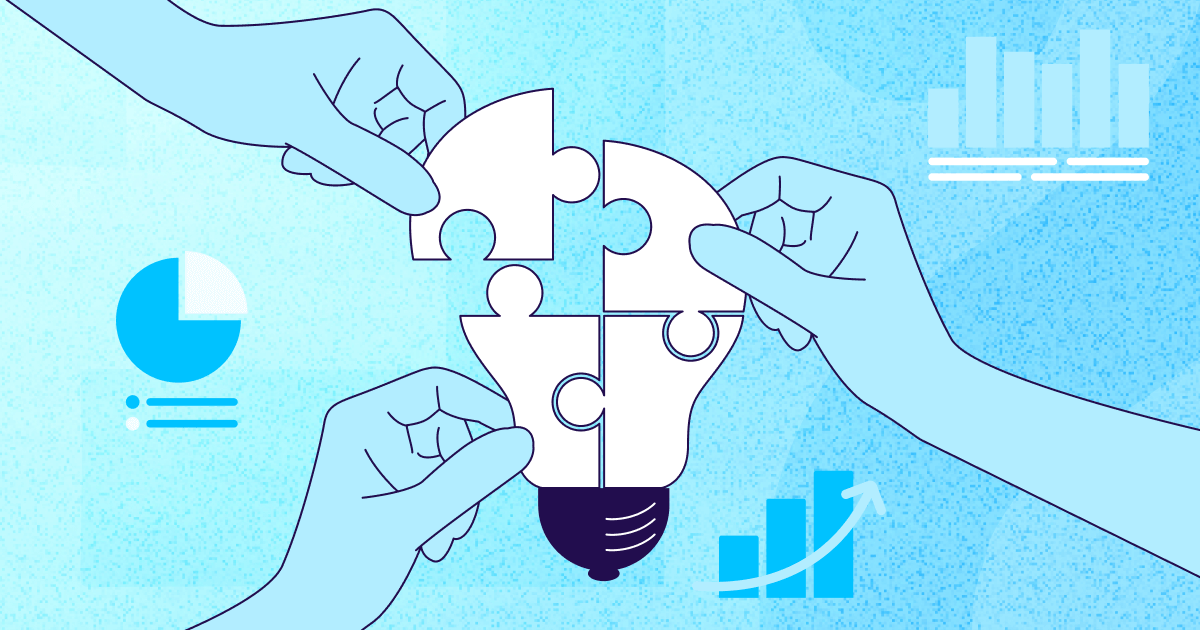
What is creative fatigue and how do you combat it?
With digital ad spend soaring to an estimated $18.5 billion in the B2B market alone, every pixel, every word, and every second counts. As marketers, you’re not just seeking visibility — you’re also striving for resonance, connection, and conversion.
To achieve these goals, your creatives must strike the right chord and stay fresh to maintain their impact. And identifying and preventing creative fatigue is a solid step in that direction.
What is creative fatigue?
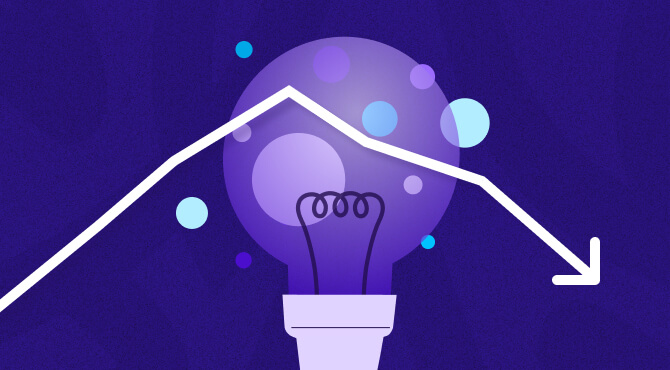
Creative fatigue happens when your audience is repeatedly exposed to the same creative elements. It means viewers no longer engage with once impactful ads, leading to declining engagement and conversion rates.
The main culprits behind creative fatigue are overexposure and habituation. When audiences see the same or similar ads from brands over and over, their brains become accustomed. These creatives no longer excite them, so they stop paying attention.
It’s no surprise that creative fatigue is bad for business, but luckily you can take certain steps to prevent and combat it.
How to identify creative fatigue
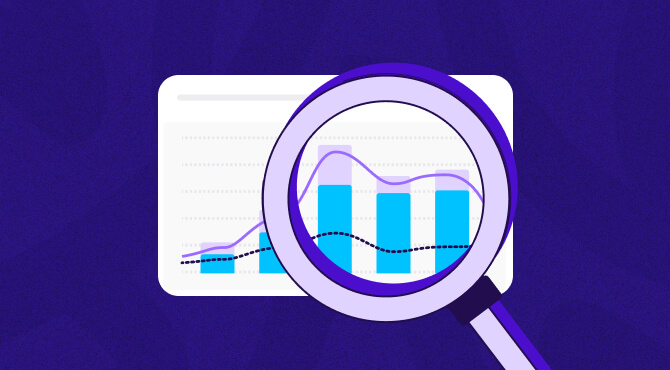
You have two ways to know whether creative fatigue is impacting your ads:
1 — Automatic notifications
Here, Meta notifies you with a warning message:
- Before a campaign is active. Meta predicts and warns you creative fatigue may occur in the first seven days of your campaign.
- After a campaign is active. Meta shows you a ‘Creative limited’ or ‘Creative fatigue’ warning in the delivery column of your Meta Ads Manager account.
However, as automatic notifications only apply to a select few ad types (and social platforms), they aren’t as effective as a manual diagnosis when it comes to identifying creative fatigue.
2 — Manual diagnosis
Manual diagnosis involves looking at various ad campaign metrics to determine whether your ad is suffering from creative fatigue.
Here are some common indicators:
- Lower click-through rate (CTR): CTR indicates how engaging your ad is and whether it’s compelling enough for visitors to take your desired action (think: install an app, sign up for a trial). Falling CTRs indicate your audience is losing interest in your creatives.
- Dropping impressions: Social media algorithms are designed to spot and feature relevant content at the top of feeds, including paid ads. If your audience doesn’t interact with your creatives, they may likely not see them in the future. Therefore, a decline in impressions over time means it’s time to refresh your creatives.
- Underperforming KPIs: If you have a higher cost per click (CPC) or cost per acquisition (CPA) — or really any other cost per action metric, it’s likely creative fatigue. As audience responsiveness lowers due to repetitive content, you’ll find yourself spending more to achieve the same campaign goals.
- Declining return on ad spend (ROAS): When the audience starts scrolling past your ads, it lowers engagement and conversion rates, leading to lower ROAS. This is a clear sign that your advertising efforts are yielding diminishing returns.
Creative fatigue vs ad fatigue
Creative fatigue and ad fatigue are closely related but different parts of the advertising process.
Here’s the gist: Ad fatigue happens when a specific ad doesn’t work as well anymore because it’s been shown to the same people too many times.
Suppose you keep seeing an ad for a gaming app across various platforms or within a short time frame. You may get tired of it and ignore or actively avoid it, leading to a decrease in engagement and performance metrics for that specific ad only. That’s ad fatigue.
On the other hand, creative fatigue is when the same kind of ads feel repetitive. Even if they’re different ads, if they all look very similar with the same pictures or words, you might ignore them too.
Think of it as the gradual decline in the effectiveness of creative components due to overexposure.
Continuing with our gaming app example, if you see ads that look and feel very similar (think: same gameplay images, repetitive slogans), you’ll be less interested in all of the ads, not just one. That’s creative fatigue.
Best practices for beating creative fatigue
Think you have a creative fatigue problem? Here are a few best practices to prevent it and hold your target audience’s attention:
1 — Change the ad backgrounds
Preventing creative fatigue can be as simple as changing the background color.
Sticking to the same color in every ad leads to ad blindness. In contrast, a quick background change provides a visual refresh that catches the viewer’s attention.
Just look at these Duolingo ads from Ed Waterfield:
Sweet, right?
Even if you don’t use solid colors, you can change the scenery to have a similar impact. For instance, when promoting a travel app, consider using different destinations as backgrounds for your ad.
2 — Diversify your creative assets
Make different versions of your ads, and switch them around during your campaign to keep people interested. This approach helps ads flow smoothly, plus you can tweak them for different times of the year or special events you want to target.
Change things like the copy, colors, and call to action. Even seemingly small changes work to engage viewers. Here’s how Heidi Rodinsky used this idea for BlockChat ads:
3 — Establish frequency caps
The optimal ad frequency depends on the channel you’re using and how many people you’re trying to reach. Creative fatigue is more likely when you’re showing your ads to a smaller group of people.
The best solution is implementing frequency caps within your campaigns. Use this feature to adjust the number of times a specific user sees your ad. During campaign setup, configure frequency caps to guarantee your ads reach unique users within your target audience pools.
You can also try different settings like:
- Automatic rules: Most ad platforms have automatic rules that can help you avoid overexposure. For example, you can set a rule that stops showing your ad to someone after they’ve seen it twice. Automatic rules are handy, especially when you’re too busy to check your campaign every day.
- Ad rotations: To avoid showing the same ad too much, try making a few different versions of it. Then, switch between them every few days. This keeps things fresh for viewers.
- Ad schedulers: Some ad platforms let you show different ads on different days. This means people won’t see your ad too often, which can help prevent fatigue. It’s a built-in feature on platforms like Facebook and Google Ads, so make sure to use it.
Note that you won’t find frequency capping on all ad platforms, so be sure to take advantage when it’s on offer.
4 — Exclude past users… for the time being
In this case, past users are those who have already engaged with your posts, know what you’re advertising, and clicked through your ad but didn’t convert. If you continue showing this bunch your ad, you’ll only pester them, leading to creative fatigue.
To avoid this, create a custom audience using Facebook Pixel and target people who have clicked through to your site or app in the past two months. Then exclude those who took action but didn’t convert.
And don’t worry — this isn’t a permanent situation. You can get back to these users when you launch a retargeting campaign.
5 — Update assets regularly
Introduce fresh ad creatives, or refresh your existing assets, to provide new stimuli for your audience. You can also experiment with different ad formats (carousel ads, video ads) and try new combinations to pique the audience’s attention.
Updating creative assets regularly re-engages viewers and optimizes conversions, significantly lowering fatigue risks.
6 — Use dynamic ads
Dynamic ads are your typical static ads, but they change into a slightly different version each time you hit refresh. Kind of like this one:
Here’s how these ads work: Instead of making one fixed ad, you make a template and a bunch of different pictures and words that can fit into it. When the ad shows up, it grabs a picture, some text, and other stuff from the bunch and puts it all together.
For instance, a gaming app could use dynamic ads that show different levels, characters, or achievements.
As the ad is always changing, your audience won’t get bored of seeing the same thing over and over again.
7 — Optimize campaigns
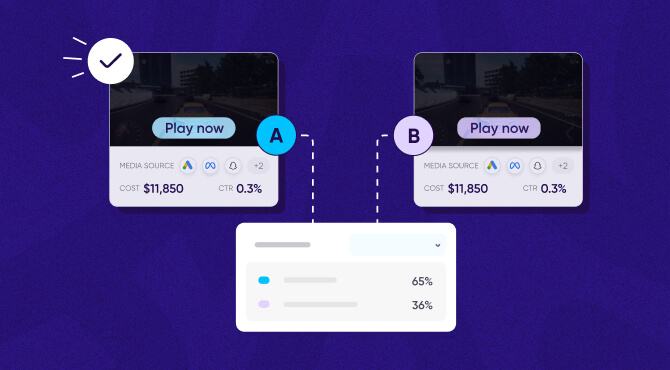
Monitor and analyze campaign performance regularly to identify underperforming ads and make necessary adjustments for better results.
Focus on important metrics like CTR and cost-per-action metrics (for example, CPC and CPA) to pinpoint improvement areas. You can also try A/B testing, which is comparing different versions of your ad to see which one works best.
Here’s how:
- Find out which parts of your ad people like the most. Test different ad parts, like pictures or words, to see what people respond to the most.
- Change your ads to match what’s happening. Customer preferences change over time as tastes and trends evolve. A/B testing lets you change your ads to match what’s happening, so people keep liking them.
Essentially, A/B testing helps you keep improving your ads over time. By trying different things and seeing what works, you can keep your ads interesting and effective.
Another area to focus on is targeting. You might not need to change what your ads are about or how they look, but you do have to target different people. This includes:
- People who visited your website before
- People who are similar to your current customers
- New people who might be interested in something different
The idea is simple: If one group isn’t interested, try another!
8 — Leverage third-party creative tools
Don’t hesitate to tap into third-party creative tools like Canva and Adobe Spark. These tools offer a multitude of designs and options, helping you maintain the freshness of your ads even when you’re not a design expert.
Alternatively, you can team up with professional agencies to get fresh ideas for your campaigns. Their experience can make your ads even better and keep your content engaging and effective.
The power of creative optimization
Creative optimization is a powerful tool in the fight against creative fatigue. By automating the testing and updating of ads, it ensures your advertising efforts stay fresh and effective.
Let’s say you have an online shopping app. Using optimization tools, you can create different versions of your ads, showing seasonal clothes or highlighting promotions. These tools then analyze the performance of each ad, showing you which ones are resonating best with your audience so you can adjust your ads for better results.
Creative optimization helps prevent your ads from becoming stale, while driving traffic and conversions for your brand. AppsFlyer’s creative optimization tool is a great example. Using AI, it provides detailed insights into creative performance, helping you increase your ROAS and drive higher customer lifetime value (LTV). Features like cross-network aggregation and automatic tagging further simplify creative ideation and optimization, helping you make informed decisions.
Key takeaways
- Creative fatigue occurs when audiences are exposed to the same creative elements repeatedly, causing them to disengage. It can significantly impact your ads’ effectiveness, resulting in lower engagement and conversion rates.
- Monitoring ad performance metrics like CTR, impressions, and ROAS can help identify signs of creative fatigue.
- Creative fatigue and ad fatigue are related but distinct concepts. Ad fatigue pertains to specific ads, while creative fatigue refers to repetitive creative elements across ads.
- To combat creative fatigue, implement best practices like changing ad backgrounds, diversifying and updating creative assets, and establishing frequency caps. Third-party creative tools and optimization solutions can also streamline the process of testing and updating ads.
- Creative optimization involves automating the testing and updating of ads. AppsFlyer’s AI-powered tool is one way to help you proactively maintain engaging and relevant ads.
